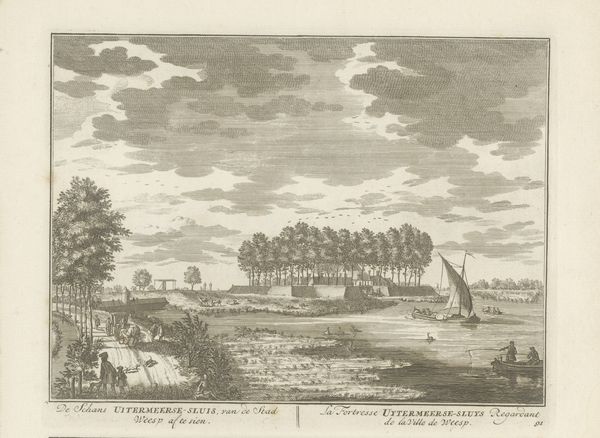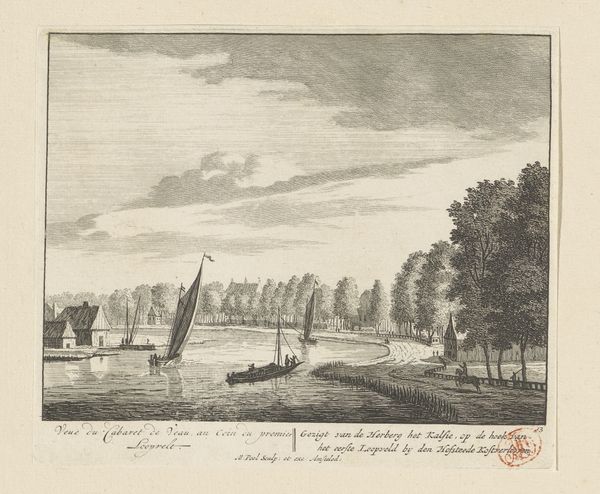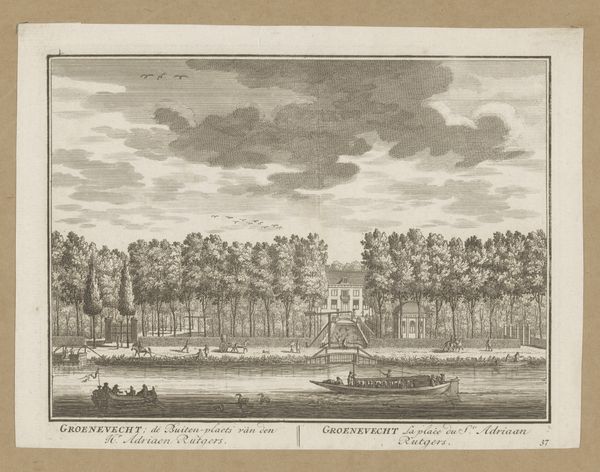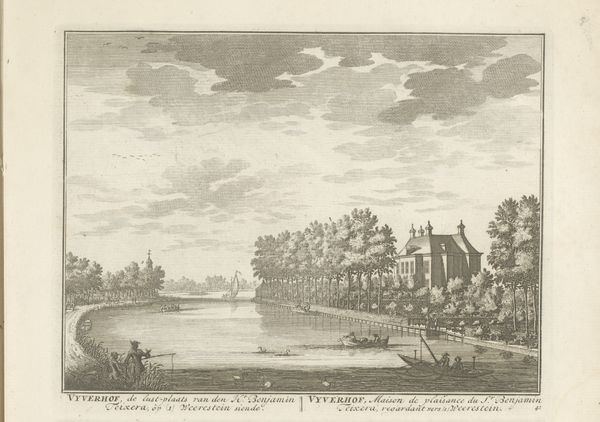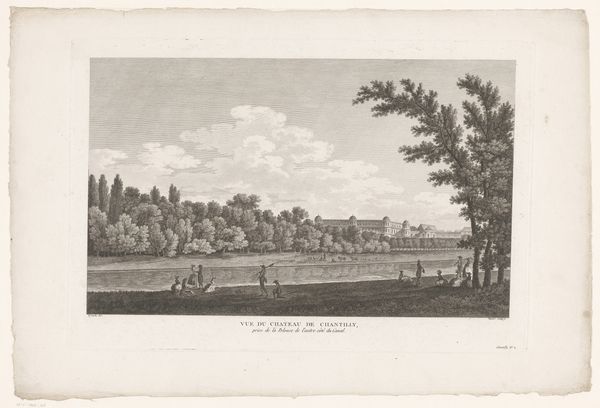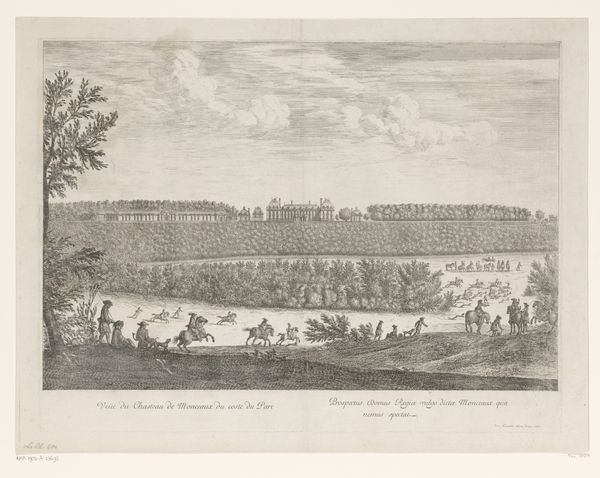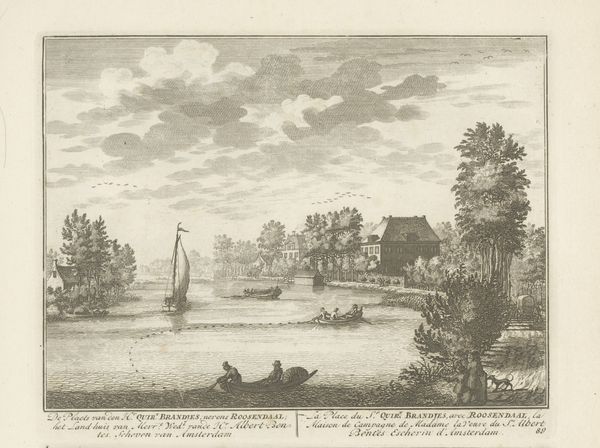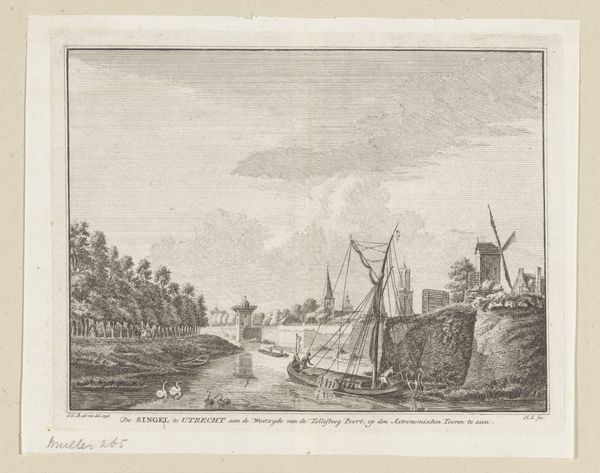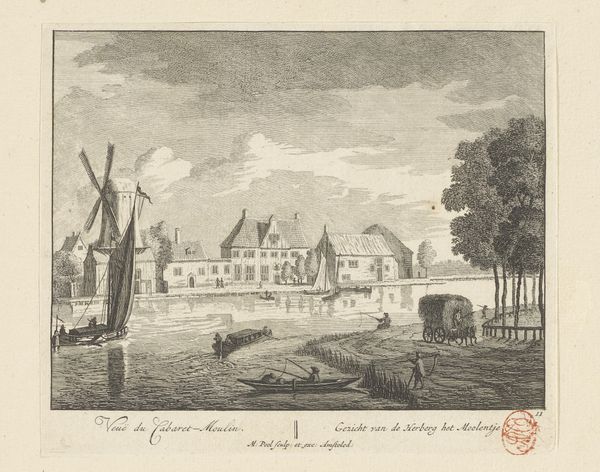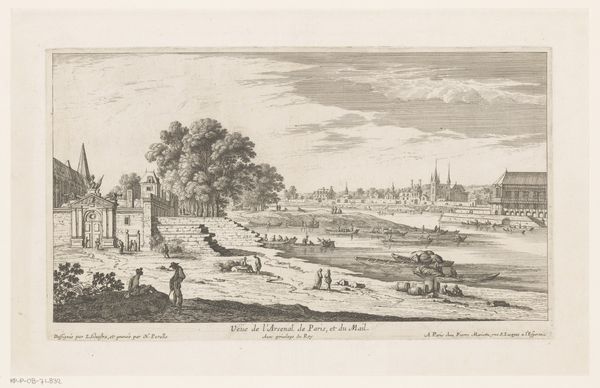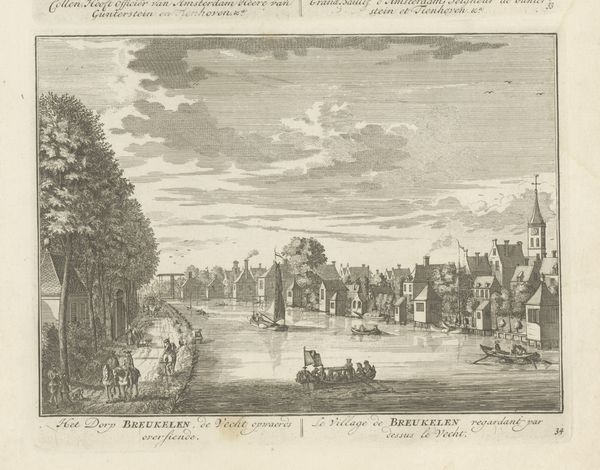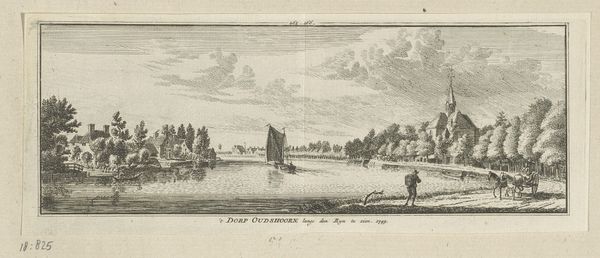
print, engraving
#
dutch-golden-age
# print
#
old engraving style
#
landscape
#
folk-art
#
15_18th-century
#
cityscape
#
engraving
Dimensions: height 160 mm, width 201 mm
Copyright: Rijks Museum: Open Domain
Daniël Stopendaal made this print of the Uitermeerse Sluis at Weesp in the early 18th century, using etching and engraving. This image is more than just a pretty picture; it gives us insight into the social and economic structures of the Dutch Republic. The windmills, for instance, were crucial for land reclamation and industry. The waterways were the highways of the time, bustling with commercial traffic, connecting towns and facilitating trade. Weesp was strategically important, guarding access to Amsterdam. The print also speaks to the institutional history of art. It's a commercial product, meant to be sold and collected. The Dutch were pioneers in the art market, with a thriving middle class eager to decorate their homes with landscapes and city views. The inscription in both Dutch and French suggests an international market. To understand this print fully, we can delve into archives and historical accounts. By studying maps, economic records, and travel logs, we can appreciate its value as a cultural artifact.
Comments
No comments
Be the first to comment and join the conversation on the ultimate creative platform.
